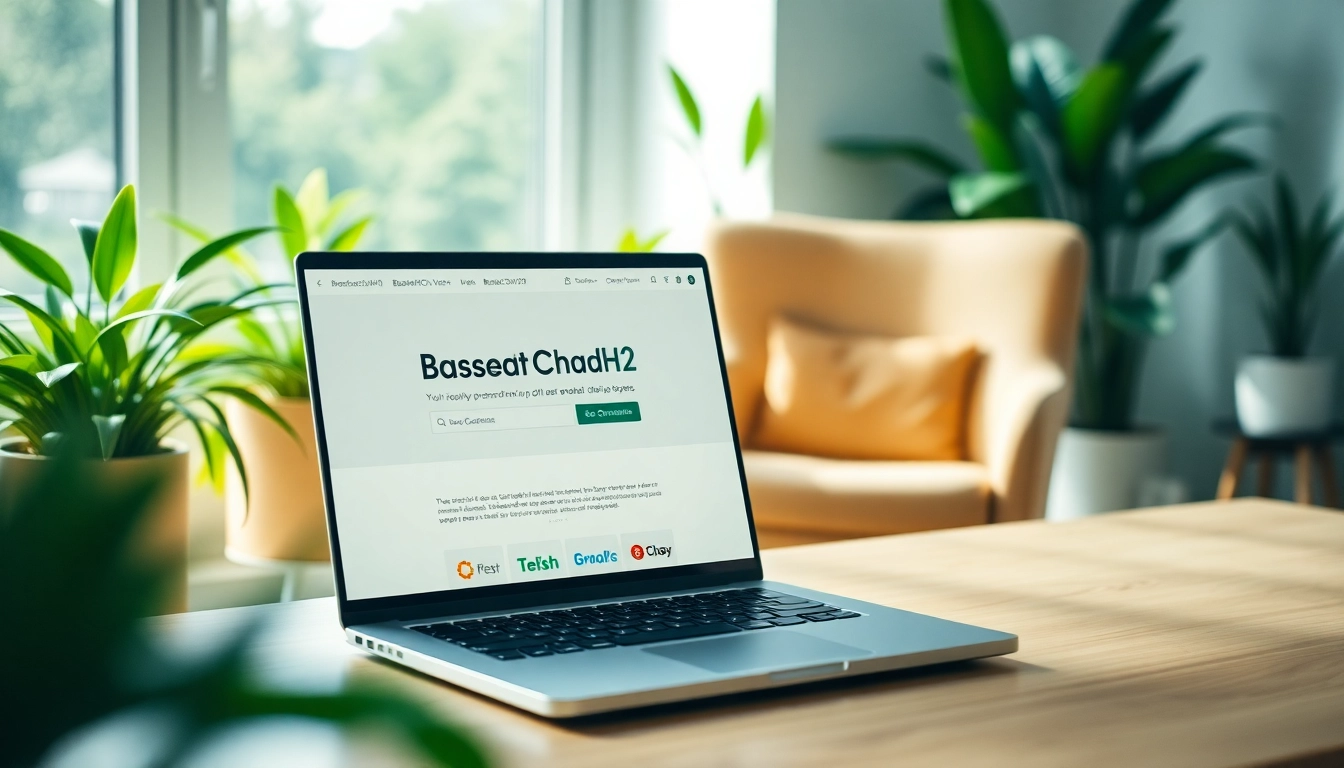Understanding Your Target Audience
To effectively grow your audience, the first step is to develop a deep understanding of who that audience is. This involves collecting data about audience demographics, behaviors, and interests, which can help you craft tailored marketing messages that resonate with them. The more precise and targeted your marketing strategies are, the more effective they will be in reaching your audience and compelling them to engage with your brand.
Identify Key Demographics
Demographic information such as age, gender, income level, education, and location plays a pivotal role in shaping an understanding of your audience. For instance, a skincare brand might attract a predominantly young female demographic, while a finance platform might appeal to adults aged 30-50. Tools like Google Analytics and social media insights can provide valuable information on who is currently engaging with your brand.
As you compile demographic data, consider utilizing surveys and feedback forms to collect specific insights directly from your audience. This information can enhance your understanding of their preferences and motivations, allowing you to tailor products or services accordingly. For a more nuanced understanding, segment your demographics into various groups based on shared attributes and characteristics.
Analyze Audience Behavior
Once you’ve identified your audience’s demographics, the next phase involves analyzing their digital behavior. This includes understanding how they interact with your content and their overall online activity. Utilizing tools such as Google Analytics, you can track page visits, session durations, and exit rates. Additionally, social media analytics can shed light on which posts drive engagement and shares.
Understanding the user journey is also crucial. Examine the steps your audience takes from discovering your content to making a purchase or signing up for a newsletter. By identifying potential barriers at each stage, you can refine your strategy to enhance user experience and encourage greater interaction.
Segment Your Audience for Better Engagement
Audience segmentation is the process of dividing your audience into distinct groups based on shared characteristics or behaviors. This practice allows you to create tailored marketing messages that resonate with each segment. For instance, you might segment your audience by their stage in the customer journey—awareness, consideration, or decision-making.
Another effective method is to segment based on interests. For example, a fitness company may segment its audience into various categories such as yoga enthusiasts, weight lifters, and cardio lovers. With these segments, you can craft unique marketing campaigns or content strategies that address each group’s specific needs and preferences, leading to improved engagement rates and audience loyalty.
Creating Compelling Content
Quality content is vital for attracting and retaining an audience. Your content must not only be informative and relevant but also engaging enough to keep readers coming back. The right content strategy can significantly enhance your visibility and authority in your niche.
Types of Content That Attract Attention
When considering the types of content that can attract attention, think about various formats such as blog posts, videos, infographics, podcasts, and social media updates. Each format has its own unique advantages. For example, video content is highly shareable and often enjoys higher engagement rates on social media, while blog posts are excellent for SEO and in-depth exploration of topics.
Ultimately, it’s about finding the right mix that resonates with your audience. Research trending topics within your niche, and leverage tools like BuzzSumo or AnswerThePublic to uncover what types of content are most engaging. High-quality, informative content that provides solutions to problems or answers to questions is more likely to catch the eye and keep your audience engaged.
Using Storytelling to Connect
Storytelling is a powerful tool in content creation. By embedding narratives into your content, you can foster a greater emotional connection with your audience. Stories provide context, inspire, and engage, making your brand more relatable and memorable.
To effectively use storytelling, focus on personal anecdotes, case studies, or user experiences that reflect your brand values. These narratives should be authentic, relatable, and aligned with your marketing message. For example, a nonprofit organization might share a powerful story of someone whose life was changed thanks to their services, eliciting empathy and encouraging donations.
How to Share Content Effectively to Grow Audience
The way you share your content can be just as important as the content itself. Utilizing various distribution channels—like social media platforms, email newsletters, and partnerships with influencers—can enhance your reach significantly.
Social media is particularly effective for fostering engagement; platforms like Facebook, Instagram, and LinkedIn allow content sharing to a broader audience. Engaging visuals and attention-grabbing headlines can enhance visibility on these platforms. Additionally, consider leveraging paid promotions to boost particularly high-performing posts for increased reach.
Email marketing also remains a powerful tool for content sharing. By sending out newsletters that highlight new content, you can drive traffic back to your website while keeping your audience informed and engaged.
Leveraging Social Media Platforms
With billions of users worldwide, social media is an invaluable tool for audience growth. By selecting the right platforms for your brand and employing strategic engagement techniques, you can significantly expand your reach and foster a community around your brand.
Selecting the Right Platforms for Your Brand
Choosing the right social media platform is crucial for effectively reaching your target audience. Start by analyzing where your audience spends most of their time. For example, a B2B company may find LinkedIn to be more effective than Instagram, whereas a fashion brand might see better engagement on visual platforms like Pinterest or TikTok.
It’s also important to consider the unique features and functionalities of each platform. For instance, Instagram is focused on visuals and engagement through stories, while Twitter is designed for quick updates and conversation. Tailor your content to maximize the potential of each platform, using videos, images, and texts in ways that resonate with the specific audience present there.
Engagement Techniques to Foster Community
Engagement is key to building a strong community on social media. One effective technique is to foster two-way communication by encouraging audience participation through polls, Q&A sessions, and comments. This approach not only builds rapport but also provides insights into what your audience values.
Creating user-generated content campaigns can further enhance engagement. Encourage your audience to share their experiences with your brand and reshare this content to build trust with potential customers. For example, a fitness brand might ask users to post their workout videos using a specific hashtag, showcasing real customers and creating a sense of community among them.
Measuring Social Media Impact on Audience Growth
It’s essential to measure the impact of your social media efforts on audience growth. Key performance indicators (KPIs) such as engagement rates, follower growth, shares, and referral traffic to your website can help you gauge success. Tools like Sprout Social and Hootsuite can provide in-depth analytics to evaluate social media performance.
Regularly reviewing these metrics will inform your strategy moving forward, allowing you to double down on the tactics that work and revise those that don’t. Consider setting specific goals and benchmarks to enhance accountability and track progress over time.
Building an Email Marketing Strategy
Email marketing is one of the most effective methods for maintaining customer relationships and driving audience growth. With a solid email strategy, you can reach your audience directly in their inboxes, creating personalized and targeted campaigns.
Creating Lead Magnets That Grow Your Audience
A lead magnet is an incentive offered to potential customers in exchange for their email address. Effective lead magnets could include free ebooks, exclusive content, discount codes, or webinars. The goal is to provide value that encourages users to share their contact information willingly.
When designing lead magnets, ensure they align with the interests and pain points of your target audience. For instance, a digital marketing agency might offer a free guide on social media strategies, providing value while also establishing authority in the topic.
Personalization Techniques for Higher Open Rates
Personalization can dramatically increase email open and click-through rates. A straightforward way to personalize emails is by using your subscriber’s first name in the subject line and body. However, it goes beyond just the name—consider segmenting your email lists based on user behavior and past interactions.
Customized content that reflects individual preferences, such as tailored product recommendations based on previous purchases or browsing history, can also drive engagement. Furthermore, utilizing triggered emails—like a follow-up after a purchase or a birthday wish—can foster a sense of connection and encourage loyalty among subscribers.
Tracking Success Metrics in Email Campaigns
To determine the effectiveness of your email campaigns, tracking success metrics is paramount. Key metrics include open rates, click-through rates, conversion rates, and unsubscribe rates. By analyzing these metrics, you can glean insights into what’s resonating with your audience and what requires adjustment.
Utilizing A/B testing allows you to experiment with different subject lines, content formats, and sending times to see what yields the highest engagement. By refining your approach based on real data, you can continuously improve your email marketing strategy.
Evaluating and Optimizing Your Growth Strategy
Growth strategies are not static; evaluation and optimization are crucial to keeping pace with changing market dynamics and audience preferences. Regularly reviewing your strategies can help identify areas for improvement and optimize audience engagement.
Key Performance Indicators to Monitor
Identifying and monitoring the right KPIs is fundamental to evaluating your growth strategy. Essential KPIs might include audience growth rate, engagement metrics (likes, shares, comments), conversion rates, and retention rates. By consistently tracking these indicators, you can assess the health of your audience growth efforts.
Establishing a routine for evaluating these metrics—such as weekly or monthly reports—can help you stay proactive in addressing any concerns before they escalate into larger issues.
A/B Testing for Continuous Improvement
A/B testing is a powerful technique for optimizing your marketing campaigns. By creating two variations of a campaign—whether it be an email subject line, ad copy, or social media post—you can determine which version performs better based on real-time data.
Even minor adjustments, like changing the call-to-action or modifying an image, can significantly impact performance. Consistently applying A/B testing can lead you to discover what resonates best with your audience, allowing for continuous improvement in your strategies.
Iterating Your Approach Based on Audience Feedback
Audience feedback is invaluable in shaping and optimizing your growth strategies. Collecting feedback through surveys, polls, and direct outreach can provide insights into their preferences and challenges. Analyze this feedback to identify common themes and pain points.
Using audience feedback to iterate your approach not only enhances your offerings but also shows your audience that you value their opinions, fostering a deeper sense of loyalty and connection. Continuously adapting and evolving based on user insights can significantly enhance your brand’s resonance in the market.



